Smart voice assistants are reading reviews. Amazon dash buttons are making product ordering fast. IoT has taken over the lives of consumers. With consumers consuming content continuously and making purchases through various touchpoints, traditional eCommerce platforms struggle to serve customers with satisfaction.
So, how can merchants avoid experiencing hair-pulling frustration without having to design an IoT device? How can merchants reap the rewards without having to build a back-end solution from scratch? The answer is headless commerce.
Merchants' madness to stand up to customers' expectations has made eCommerce lose its head.
Headless Commerce is more than just a buzzword. It is a solution that spells a seamless shopping experience. It is a juxtaposition of flawless backend functionality and an extraordinary user experience. It acts as a flyover made up of the finest form of technology that forays us into the future.
Headless Commerce = Flawless Functionality x Optimized Experience + (Cost Effectiveness And Personalization)
Headless Commerce isn't a trend. It's the future of Commerce we are gabbing about here. If your brand doesn't sit on a headless setup, would it be able to compete against your competitors? After being around for a few years, the headless setup has finally picked up steam. , , and The Home Depot have already switched to headless setup.
What Exactly Is Headless Commerce?
This unchained logic comes with Headless Commerce architecture works as it sounds: it is where the eCommerce platform's architectural flexibility that allows you to attach as many heads as possible to the body, heads being the customer touch-points or a system you need to support employees. presentation layer (the head) separates from the platform's inner framework (the body). It describes decoupling the front end of your eCommerce experience from the back-end.
Separating heads from the body (an eCommerce logic provided by companies like Elastic Path) arms you with innovation, cuts down development costs, and boosts market effectiveness. Here's how Elastic Path Commerce Cloud helps Commerce stores float over the internet.
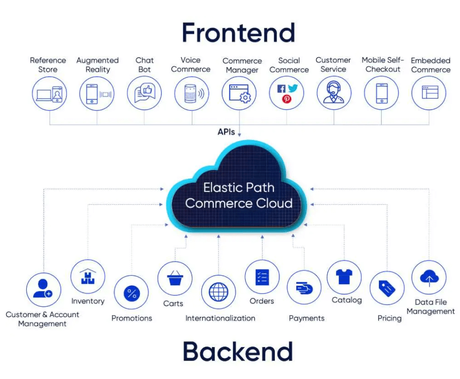
Traditional Commerce vs. Headless Commerce
If the frown on your face is still there *ahem*, here are the key differences between traditional commerce and headless commerce.
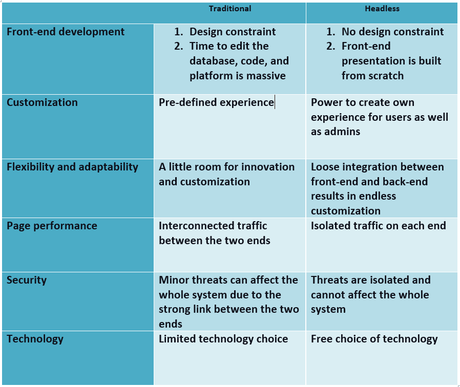
Traditional commerce platforms have their heads tightly screwed into their bodies. The strong link between the two allows the platform to serve a single channel (usually a website). The inability of the traditional platform to swap out its head from its body results in high development costs and overall output limitation. Examples include monolithic platforms like Magneto or Salesforce Commerce Cloud.
In contrast, the unchained architecture comprises cloud-based infrastructure, with an API feeding the back-end data model. Since APIs carry most of the workload, you can improve your web store UI, thus impress your customers better and expand your reach faster.
How Headless Commerce Works
Marketing teams crave the freedom to design the layout they want without addressing limitations. This craving for freedom can be fed, either by working on two separate systems or making the eCommerce go headless. The former option comes with challenges for Search Engine Optimization (SEO), marketing, operations, and more. And worse yet, you need to forget what efficiency and optimization are before you can start working with separate systems.
The solution is to subvert the problem into a single platform. The fabric of flexibility you need to stitch the platform together is provided by the headless setup.The headless setup allows you to experiment with both the environment (front-end and back-end), with one being independent of the other. The front end communicates to the back-end via Application Programming Interface (API).
Decoupled doesn't mean disconnected.
The organization sitting on the platform gets to experiment with both environments. The data exchange occurs between the decoupled systems, and API calls keep this exchange intact.

How Headless Commerce Affects Online Selling
Making eCommerce strategy mature is as easy as making eCommerce platform go headless. Don't forget that headless commerce isn't just an upgrade, nor is it just a shopping cart. It is a way to create countless customer touchpoints using the same development. With headless first architecture, the full power of crafting customer experience is in your hands.
- The benefits it brings go beyond flexibility. Constrained by nature, headless commerce supports multi-platform optimization.
- Folding responsive web elements around the mobile is easy, thanks to its loose integration.
- It helps marketers hold the hand of innovation without disturbing the back-end process.
- It results in lower customer acquisition costs and a high conversion rate.
- Developers enjoy the juxtaposition of flexibility and familiarity.
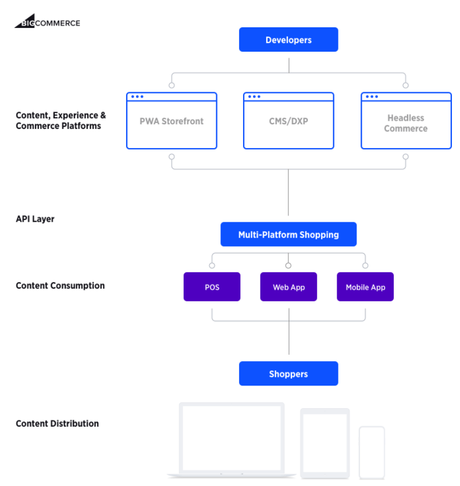
Nothing spells "Game on!" as going headless before going global.
How Headless Commerce Benefits Businesses
If any brand has revealed the true value of incorporating a headless commerce platform, it is Amazon. Amazon doesn't fail to amaze and make people crave its services. The only question that is hammered into the mind of marketers is " HOW? "
A shows that study by Salmon60% of the consumers crave Amazon-like services -services that prioritize the convenience of consumers first and experience second. Amazon is a value destination that every brand wants its website to be, but can you afford to deliver such a service without switching to a headless commerce solution? Here are more reasons why your commerce platform should lose its head:
Over dot the online world. Don't you think a store needs customization to stand out in the sea of competition? We can hear 's 7 million storesBabylist's success story scream YES. The online register site, unusual way of generating revenue landed the brand on the headless commerce platform. After Babylist was born, it custom-coded everything. As it grew big, it got bogged down by hundreds and thousands of lines of code.
The brand banged its head hard against the wall for six months before it sat down on in the brand's order volume. Here's what sits beneath Shopify's headless setup. It comes as no surprise how the headless setup contributed to a 145% year-on-year increaseBabylist.
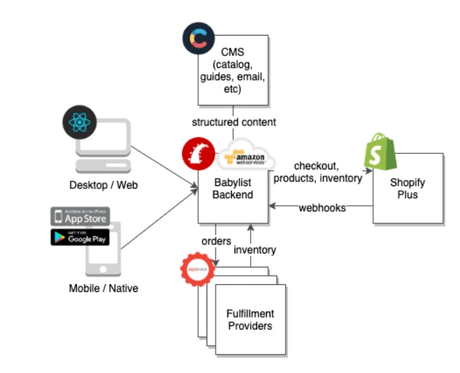
What if the giants themselves tell you , a luxury fashion brand, which manages the secret behind their success? over 20 sites, found out that after sitting on the headless setup, the brand achieved standardization across all regions on all devices. The brand is stealing the show in 35 countries via 800 retail stores. Michael Kors
The practice of using different backends for different sites paves a path for data-entry errors. Headless commerce helps brands save time and keep product details consistent across all channels by managing different sites from the same backend.
In a traditional commerce setup, the front-end and back-end share the same CSS and JavaScript files. In a headless setup, the front-end pulls files from the back-end when needed. Can you imagine the reduction in the amount of data end users' network processes?
Now, top off the above information with these two facts:
don't wait for More than 50%of web traffic comes from mobile phones, and 53% of mobile usersmore than three seconds for the web page to load. They simply back out.
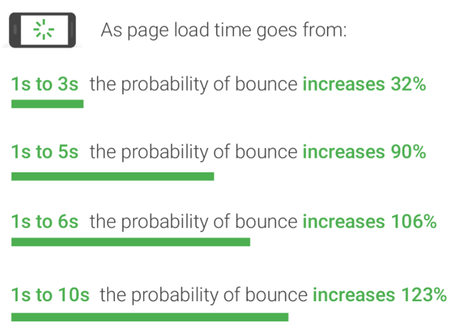
"In short, speed equals revenue," Daniel An, Google Global Product Lead (Mobile Web)
managed to reduce loading times by 81%, creating a more agile and faster website of 2000+ pages. UPC Business started setting high standards after it switched to (stands for JavaScript, APIs, and Markup).

Headless CMS + Headless commerce platforms = 🦄
It's better to go headless, but at the right time. Newer brands with limited budgets need to understand that they can sit on full-stack systems until they are ready to cross boundaries. Again, headless commerce isn't a trend. It's a step towards a better future.


